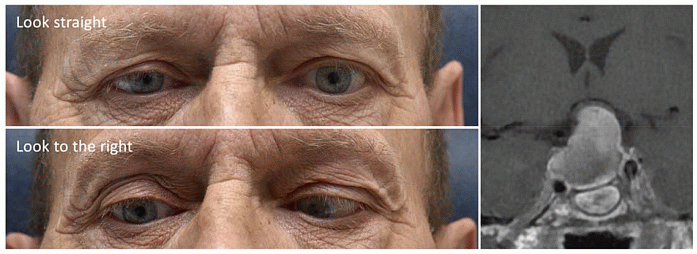SFEBES2021 Poster Presentations Neuroendocrinology and Pituitary (47 abstracts)
Coronary artery bypass grafting (CABG)-related pituitary apoplexy
Laura Serban 1 , James MacFarlane 2 , Russell Senanayake 2 , Daniela Stastna 3 , Rajeev Mathew 4 , Rishi Sharma 4 , Richard Mannion 3 , Mark Gurnell 2 & Waiel Bashari 2
1Wolfson Diabetes & Endocrinology Centre, Cambridge, United Kingdom; 2Cambridge Endocrine Molecular Imaging Group, Metabolic Research Laboratories, Wellcome Trust-MRC Institute of Metabolic Science, NIHR Cambridge Biomedical Research Centre, University of Cambridge and Cambridge University Hospitals, Cambridge, United Kingdom; 3Department of Neurosurgery, University of Cambridge and Cambridge University Hospitals NHS Foundation Trust, Cambridge, United Kingdom; 4Department of Ear, Nose and Throat Surgery, Cambridge University Hospitals NHS Foundation Trust, Cambridge, United Kingdom
Background: Pituitary apoplexy is a relatively rare but important clinical syndrome which may be associated with acute headache, visual compromise and hypopituitarism. It can be the initial presentation of a previously unsuspected pituitary macroadenoma. Recognised risk factors include hypertension and the use of antiplatelet agents and/or anticoagulant therapy. It may be life-threatening, requiring emergency endocrine (e.g hydrocortisone) replacement therapy[1] and surgical decompression for associated visual loss.
Case: We report a 63-year-old man who underwent elective coronary artery bypass grafting (CABG) for ischaemic heart disease. In the early post-operative period he developed acute severe headache with double vision and altered consciousness. On clinical examination he had hypotension (102/70mmHg), altered mental state (GCS 14/15), signs of meningism, reduced visual acuity bilaterally, bitemporal hemianopia and right 3rd, 4th and 6th cranial nerves palsies (Fig-1). Investigations revealed acute hyponatraemia [Na= 122 (133 – 145 mmol/l)] and a low random serum cortisol (128 nmol/l). Pituitary MRI revealed a large sellar mass with suprasellar and right parasellar extension, and radiological evidence of apoplexy (Fig-1). Following stabilisation and initiation of hydrocortisone, he underwent urgent transsphenoidal decompression. Intraoperative findings were consistent with pituitary apoplexy. Post-operatively his vision improved significantly (normal visual fields) with complete recovery of his 3rd and partial recovery of his 4th and 6th nerve palsies.
Conclusion: The diagnosis of pituitary apoplexy should be considered in all cases of acute headache and ophthalmoplegia in the early postoperative period following major surgery, especially in the context of a prior history of macroadenoma. Cardiac bypass surgery presents a particular risk. Early involvement of the multidisciplinary team (endocrinology, ophthalmology, neurosurgery, neuroradiology and cardiology) is essential in formulating a patient-tailored management plan.
References: 1. Society for Endocrinology Clinical Committee. (2016). SOCIETY FOR ENDOCRINOLOGY ENDOCRINE EMERGENCY GUIDANCE: Emergency management of pituitary apoplexy in adult patients
 }
}



